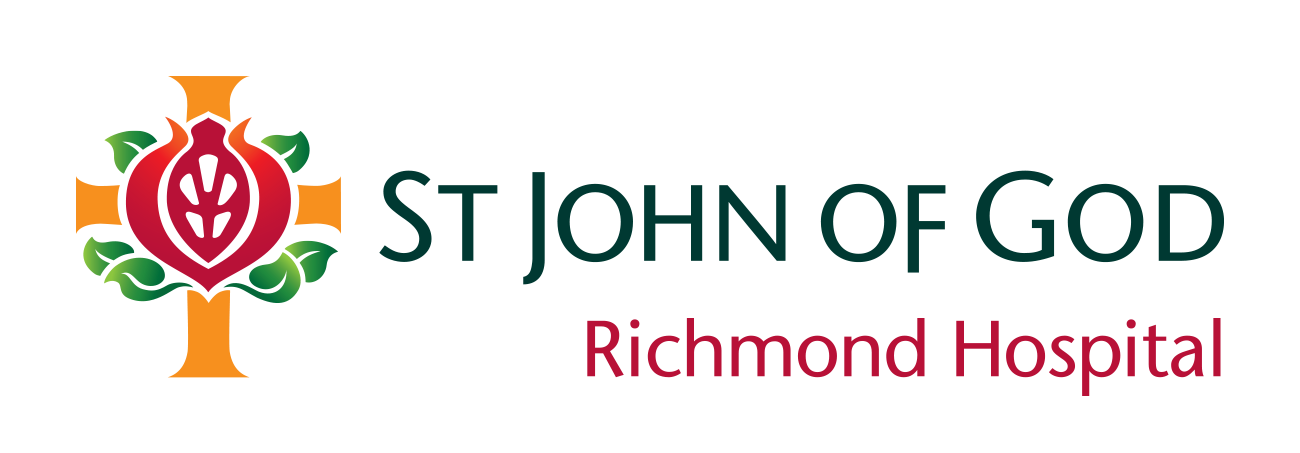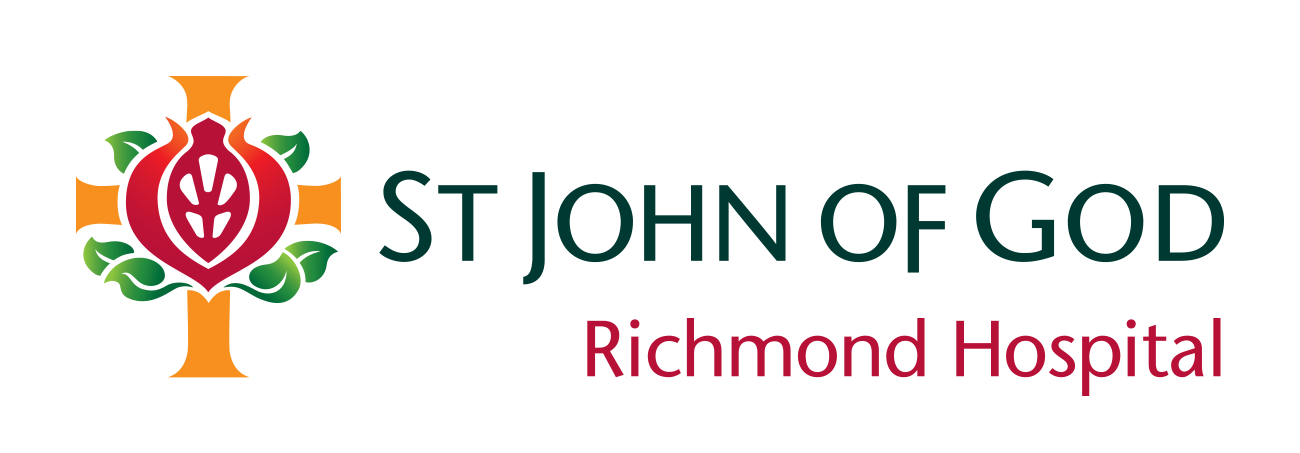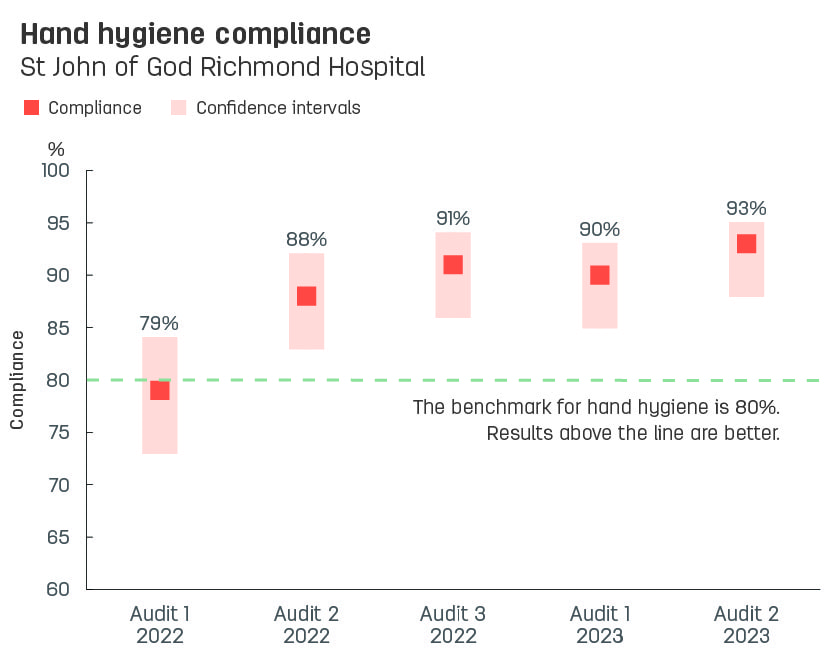- For patients and visitors
- Quality, safety and care
- Infection prevention control
Infection prevention control
St John of God Health Care has a rigorous infection control program. We work to detect and prevent patient infections in our hospitals.
What you can do
- Regularly wash and sanitise your hands.
- Don’t be afraid to ask your care team or visitors to wash their hands.
- Ask people not to visit if they are sick.
- Cover your mouth and nose when coughing or sneezing, and wash your hands afterwards.
- Do not touch wounds or internal devices (such as intravenous cannulas, PICC lines or catheters).
- Tell your care team if you have any signs of redness or infection.
- If you are sent home with a device, ask your care team how to take care of it.
- Follow instructions when taking antibiotics – taking antibiotics incorrectly can make your infection harder to treat.
What St John of God Health Care does
- Our caregivers complete mandatory hand hygiene programs.
- We report and monitor infections.
- We use medications to prevent and treat infections.
- We have a robust caregiver vaccination program.
- We have strict hospital cleaning and sterilisation procedures.
About hand hygiene
Hand hygiene is one of the easiest and most effective ways to prevent hospital infections.
St John of God Health Care hospitals regularly monitor and report on hand hygiene.
This is done through audits where trained observers watch for opportunities (called ‘moments’) when hand washing or cleaning should occur.
St John of God Health Care conducts two to three hand hygiene audits per year across all hospitals.
St John of God Richmond Hospital's hand hygiene compliance
About St John of God Richmond Hospital's hand hygiene compliance data
Our most recent results have improved due to hand hygiene promotion and awareness campaigns targeted at our caregivers, patients and visitors.
The hospital's hand hygiene audit results are displayed on the graph.
Hand hygiene compliance is shown as a percentage identified by the dark orange square. The percentage is displayed within a confidence interval (light orange rectangle) to demonstrate the breath of possible values — this is a more robust way of measuring our performance.
Hospital hand hygiene audits are noted along the bottom of the graph.
St John of God Health Care uses the national definition and benchmark set by the Australian Commission for Safety and Quality in Health Care (ACSQHC) to monitor hand hygiene compliance.
The benchmark for hand hygiene compliance is 80 per cent or better.
Hospitals aim to meet the Australian Commission for Safety and Quality in Health Care (ACSQHC) benchmark of 80 per cent or higher. The higher the score the better.
St John of God Richmond Hospital's Staphylococcus aureus blood stream infections (SABSI) data
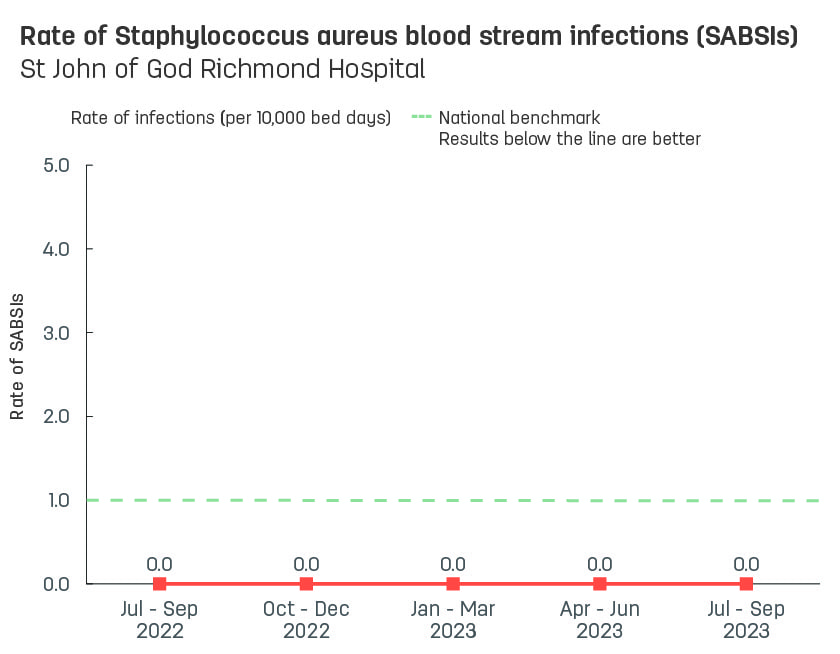
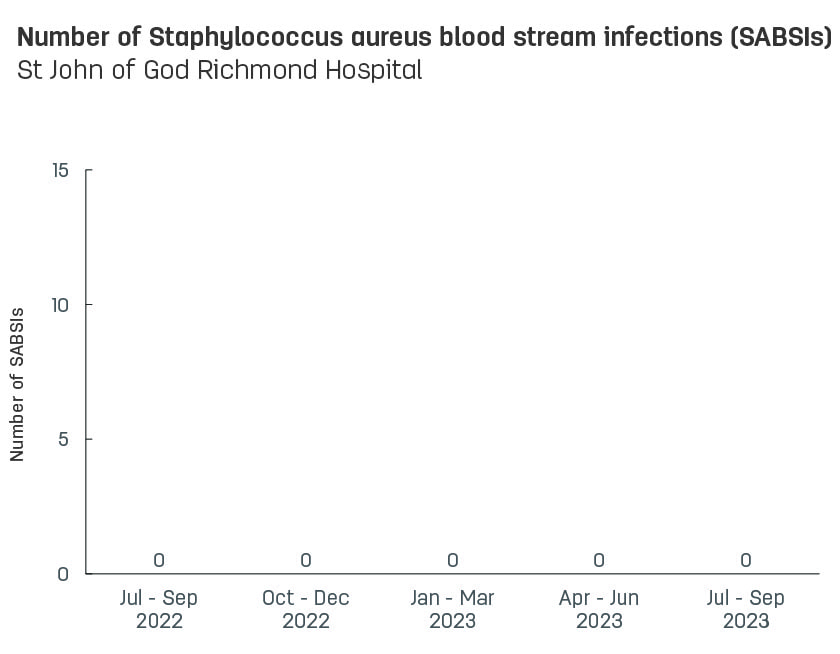
The hospital's infection rate is displayed by the orange line on the graph. Results are displayed in three-month intervals. These time periods are noted across the bottom of the graph.
The first graph shows the rate of infections patients acquired in hospital, calculated per 10,000 bed days.
The second graph shows the total number of these infections.
St John of God Health Care uses the national benchmark for hospital acquired Staphylococcus aureus blood stream infections (SABSIs), which was developed by the Australian Commission for Safety and Quality in Health Care (ACSQHC).
The benchmark is 1.0 infections per 10,000 bed days.
Hospitals aim to be under the Australian Commission for Safety and Quality in Health Care (ACSQHC) benchmark of 1.0 infections per 10,000 bed days. The lower the score the better.
Our quality and safety activities
